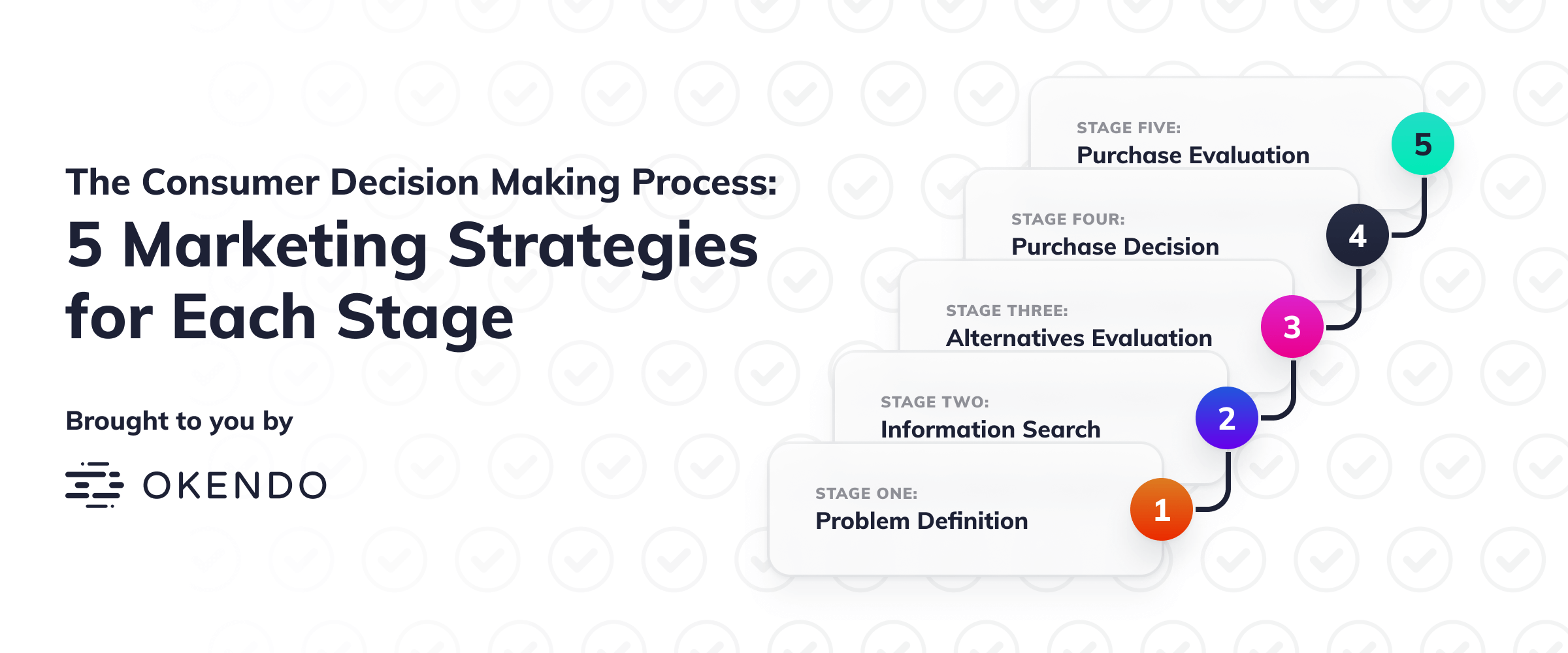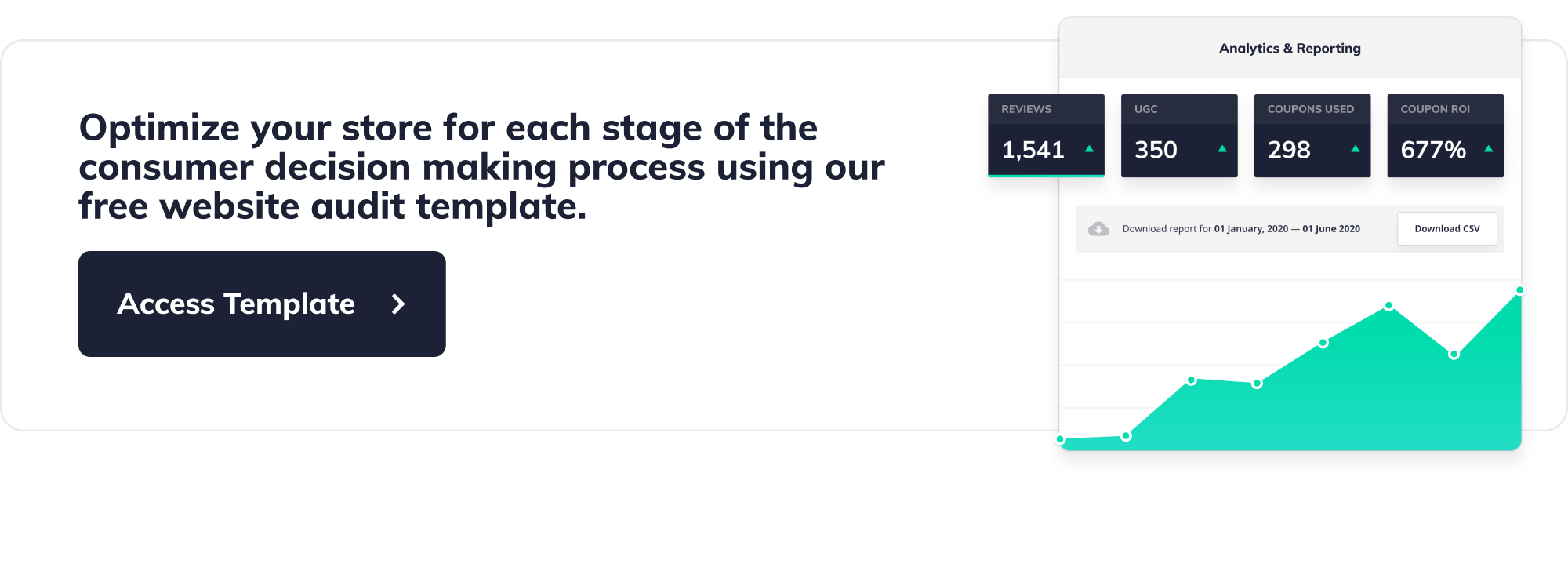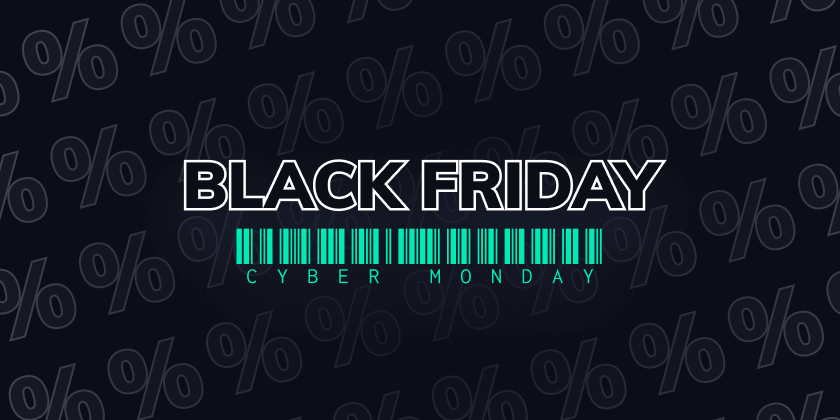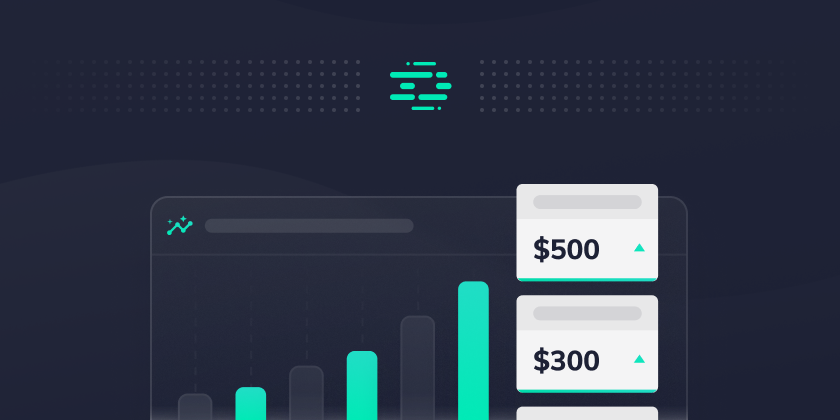-
PublishedFriday, May 28th 2021
-
The Consumer Decision Making Process: How to Tailor Your Marketing Strategy for Every Stage
The consumer decision making process is a journey. And like all journeys, it’s made up of a number of steps.
Why is it so important to walk a mile in your customers’ shoes? Because by gaining a better understanding of the choices they make at each stage of the consumer decision making process, you can fine-tune your messaging and marketing strategy for maximum impact.
So if you’re wondering what the stages in the consumer decision making process are, and which factors affect it, read on to learn more.
What is the Consumer Decision Making Process?
The consumer (or buyer) decision making process is a marketing theory based around the five distinct stages that a consumer passes through as they make the choice to purchase a product or service.
The five stages of the consumer decision process are:
-
Stage One: Problem recognition
The consumer identifies a need or problem that they’re experiencing. -
Stage Two: Information search
The consumer actively searches for products or services that could help them to meet the need or fix the problem they’re experiencing. -
Stage Three: Alternatives evaluation
Having identified a range of potential options, the consumer considers which one will offer the best value when it comes to solving their problem. -
Stage Four: Purchase decision
One product or service emerges as the best-perceived solution. The consumer completes the purchase of this item. -
Stage Five: Purchase evaluation
Having completed their purchase the consumer reviews its effectiveness in solving the problem they were experiencing.
A clear understanding of each of these five steps enables a brand to leverage effective marketing at each stage of the decision making process.
This is especially important for eCommerce brands with no direct brand interaction possible. Influencing and optimizing each stage is reliant on the strategies deployed through digital channels and marketing strategies. However, this doesn’t have to represent a disadvantage – in fact, online brands have a real opportunity to optimize their marketing efforts for each stage using data they’re able to collect from their online approach.
The 5 Stages of the Consumer Decision Making Process
Stage One: Problem Recognition
This first stage in the consumer decision making process means that your customer is becoming actively aware of a problem they’re experiencing. And, they’re making the proactive decision to take steps towards solving their problem with a product or service that meets the need.
This is arguably the most important step of the consumer decision making process. Without that lightbulb moment, the next steps on the pathway to purchase cannot be triggered. The consumer must recognize their problem and decide to take action.
What might be going through the consumer’s mind to initiate this first step?
Typically, the thought process is initiated by some kind of stimulus. This might be:
- Physiological (internal stimulus) – they feel cold, hungry, ill, tired.
- Emotional (internal stimulus) – they feel sad, happy, jealous.
- External (external stimulus) – they hear an ice cream van passing, they see an advertisement.
Whatever sparks that “I want” or “I need” moment, the consumer decision making process is triggered.
Example
Let’s consider a woman who is out walking on vacation when she sees a group of women her age passing, riding their bikes to the beach. They look like they’re having a great time and this triggers her to desire to ride a bike socially.
There are a number of motivating factors at play here. The external stimulus of the group passing by having fun on their bikes was the catalyst (an external stimulus) — but there’s also her emotional response to consider (an internal stimulus).
Inspired by the group of friends bike riding, the woman feels motivated to purchase a bike of her own.
Strategies for The Problem Recognition Stage of the Consumer Decision Making Process
The key to making sure your ideal customers notice a need for the type of product or service that you provide is to make sure they see others benefitting from it. In a psychological phenomenon known as social proof, we like to mirror the behavior of others.
User-generated content — reviews, images, videos and more — is a powerful way to demonstrate the direct impact and benefits of your product, helping potential customers identify with their own needs. 41% of consumers will read between four and seven UGC reviews to gain insight on a product before making a purchase, and much of this research will be focused on the item’s suitability for their own specific needs.

To plant the seeds of a desire or requirement for your product or service, deploy user-generated content (UGC) to social media. At this early stage of the decision making process, most consumers are browsing social media to be inspired, entertained and engaged. The audience using social media channels is broad, and browsing a self-curated range of content, so you know your messaging is likely to resonate with someone.
Social media channels provide a window into the lifestyle of others, so they are especially well suited to the leverage of UGC, highlighting the “real life” experience and satisfaction of existing customers. The chances of triggering either an internal or external stimulus are high as potential customers recognise and identify with a problem or need that they themselves are experiencing.
Takeaway
- Add UGC collected from customer reviews to Instagram Stories – 70% of Instagram users watch stories daily, making it a prime location to display incredibly persuasive UGC.
- Share customer testimonials in organic and paid posts on Facebook and Instagram – Take written reviews from past customers and display them alongside your product images or UGC to build upon shoppers FOMO (fear of missing out).
Stage Two: Information Search
The consumer is now aware of their need for a product that solves their defined problem or desire, and will begin looking for a way to find which purchase is best fit to satisfy their need. Information search — also referred to as research, or product research — is the second stage in the consumer decision making process.
To achieve maximum success at this stage, merchants need to carefully consider what will be motivating these consumers’ behaviours. Their search will look different depending on what they already know about the product they want to purchase. If the item they’re looking for is quite generic, with many variations, brands and models on the market, then they may well be looking for guidance from others with more expertise.
Essentially, they’ll be leaning on two forms of information to inform their decision:
- Internal – “What do I know about this product from my own past experience?”
- External – “What can I learn from others about this product?”
Sources of external information include acquaintances and direct recommendations, but also reviews, press pieces, ratings and more.
Example
With a strong desire motivating our example customer to find the perfect beach bike, she has quickly moved on to researching options for a new bike.
Before she begins her research, she may be considering the following queries:
- What is the best bike for women?
- What’s the best price for a women’s bike?
- What are the best brands for women bikes?
Once she begins her research, she’ll be looking for quick product comparisons. While price will be a strong contributing factor to her ultimate purchase decision, she’ll also be looking for reassurance that she’s putting her faith in the best product.
Strategies for The Information Search Stage of the Consumer Decision Making Process
In an eCommerce setting, your audience will typically turn to search engines to begin their research. In fact, 89% of customers begin their buying process with a search engine. It’s vital that your products are visible when consumers start to explore relevant search terms and queries — and this is where search engine optimization (SEO) and search engine marketing (SEM) plays an important role.
USEO involves the optimization of your store’s content to get your pages and products ranking highly on SERPs (search engine results pages), while SEM involves paid advertising.
The key to capturing customers at this phase of the decision making process is increasing your visibility on SERPs to attract intentional, highly motivated shoppers to your product pages.
This means going one step further than having them rank highly for the keywords you’ve identified by making them appear in search results as visually appealing as possible.
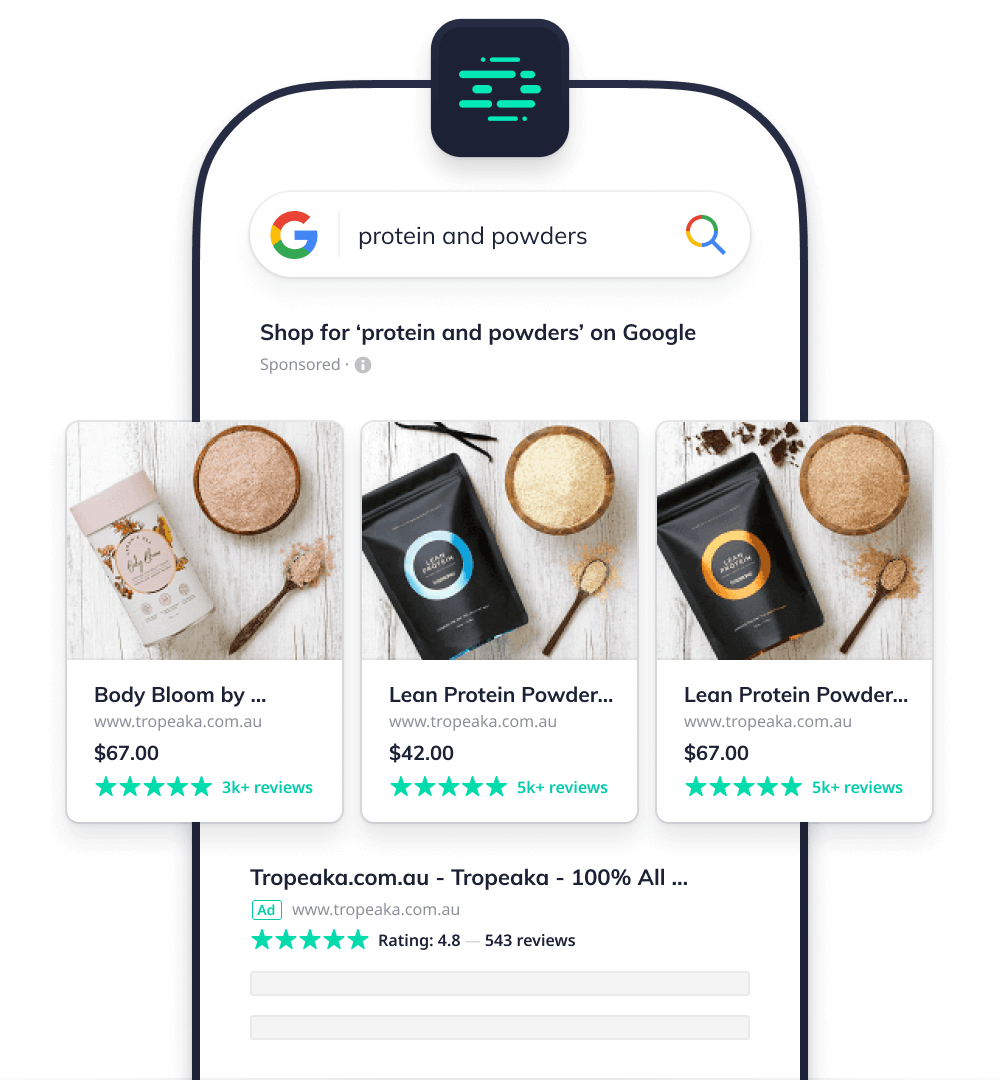
Leveraging customer reviews can help achieve both these goals. As a rich source of long-tail keywords, they’ll help you rank higher in terms of SERP positioning. In addition, adding those all-important star ratings at the exact point the consumer is looking for a way to identify a superior product is crucial reassurance. In fact, 72% of consumers won’t buy anything until they’ve read the product reviews first.
Takeaway
- Create a dedicated reviews page – Consumers actively seek out customer reviews. By creating a dedicated reviews page, when someone types “your brand” + “reviews” into Google, your website will show up first and drive higher click throughs as a result (another important ranking factor for Google).
- Respond to Customer Reviews – Responding to reviews allows you to add additional keywords that your product can rank for and it also gives you the opportunity to include other related keywords in your product’s page content.
- Push reviews and star ratings to organic and paid product listings on Google in the form of Seller Ratings, Rich Snippets, and Google Shopping Products Listing Ads – Google’s algorithm ranks websites with reviews higher as they are more trustworthy and demonstrate authority over other websites.
Stage Three: Alternatives Evaluation
Having identified a need and lined up their potential solutions, at this point in the consumer decision making process your customer will start to hone in on their final decision.
Online retailers ask their customers to place a lot of trust in them to hand over payment for products that they cannot hold, test or even receive instantly.
Because of this, it’s important to make sure that your brand is as reassuring as possible for customers. You’ll need to do all you can to demonstrate your products’ suitability and superiority at this stage.
What might be going through the consumer’s mind as they start to evaluate alternatives?
Typically, the thought process is influenced by two central factors:
- Objective – The practicalities of the purchase decision: price, functionality, features. How well will the item in question fit the need they’re experiencing?
- Subjective – The more emotional, individual response that they feel with regard to the options available. Does it appeal to their unique sense of style? Do they feel an affinity with the brand, either based on position or their past, positive interactions?
Example
At this point, our example customer may have clicked through to a few product pages, and will now be looking for clues that she’s found the perfect bike for her weekends.
In addition to well-written product descriptions and clear, appealing product photography, she will also want to see some unbiased opinions from customers just like her. For example, she might be interested to learn about the bike frame size purchased from someone of her exact height, or what people typically use the bike in question for – remember, she’s looking for a bike to take on casual trips to the beach, not a speedy city commuter.
Strategies for The Alternatives Evaluation Stage of the Consumer Decision Making Process
The goal here is to take every opportunity you have to remove all doubt or barriers to purchase from your customers’ minds. Reviews can tell us a lot about the likely suitability of a product, which is absolutely essential at this stage when alternatives are being weighed up and evaluated. In fact, the conversion rates of product pages with reviews are up to 5 times higher than those that don’t feature them.
It’s up to you to provide buyers with as much information as possible to avoid any doubt. After evaluating a product by its price, photos, and descriptions - shoppers will want to know how the product will specifically suit them before they commit and purchase.
To do this, display product and customer attributes alongside your reviews. This will provide shoppers with insights to previous customer’s personal attributes (such as height, body shape, or skin type) relative to their own characteristics. It will also allow them to identify product attributes (such as durability, design, or fit) most suitable to their specific needs.
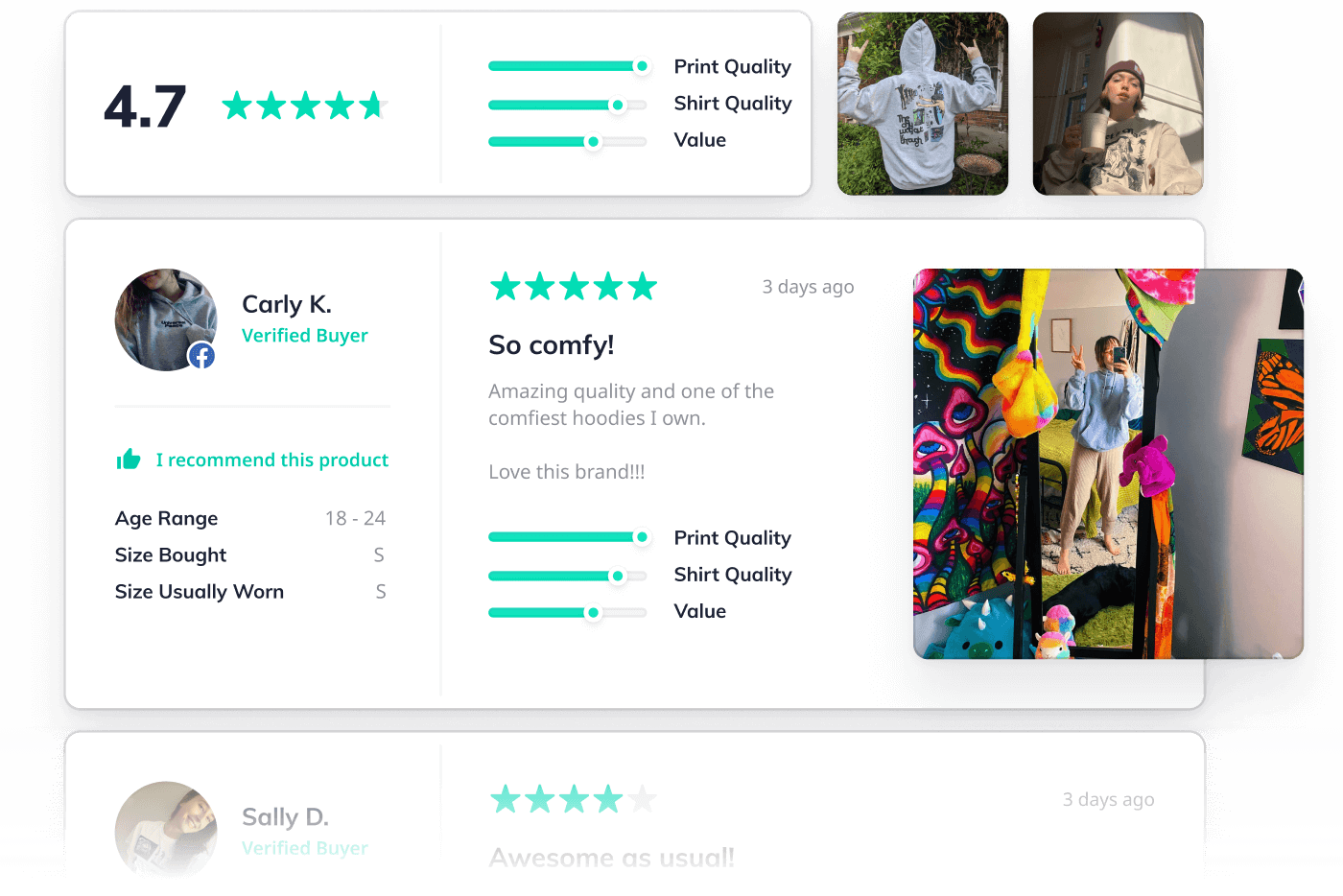
The more customers are able to relate to other shoppers who have had a good experience with your brand and products, the more likely they are to buy.
Not being able to find the right reviews is a common frustration among shoppers, and it can be the determining factor of a shopper choosing an alternative.
Takeaway
- Include customer and product attributes questions to your review request emails – This way, you can display this information alongside your customer reviews to help shoppers make a more informed purchase decision that’s tailored to their specific needs.
- Add attribute review filters to your product pages – This will allow shoppers to filter through reviews with customer and product attributes on your product pages that are most relevant to them.
- Include a Q&A section on product pages – This helps you give top-level answers to the most commonly asked questions about your products.
Stage Four: Purchase Decision
Your customer is aware of their need for a product, and they’ve identified the most likely solution from a range of options. Now it's time to get that sale safely over the line.
Purchase decision — also known as conversion — is the fourth stage in the consumer decision making process. This is the tipping point, when interest turns to commitment.
In eCommerce, the odds are somewhat stacked against you here. The average conversion rate for an eCommerce site typically hovers just below 3%.
There are many factors that can stop a consumer from completing a purchase at this critical point. They may experience:
- The compulsion to do more research (i.e. staying at Stage 3: Alternatives Evaluation)
- Doubting their original selection process (“Did I search for the right things?”)
- Sudden uncertainty around their desire to purchase a new product at all (“Do I even really need this? Am I being impulsive?”)
- Curiosity around value and pricing (“Could I get this cheaper elsewhere? Is this brand particularly expensive? What price other alternatives selling at?”)
At this point, like a game of snakes and ladders, even the most promising shopper could slide back to a previous stage of the consumer purchase decision making process.
If you’re fortunate enough to be amongst the percentage of successful first-time conversions, congratulations. At this point your customer will add the product to their virtual shopping cart, complete your checkout process and await delivery of their order.
For others, there’s still a fair amount of work to be done.
Example
Having found the perfect bike for her next weekend trip to the beach, which has been well-reviewed by a group whose demographic closely mirrors her own, our example customer is now ready to make a decision.
Will she complete the purchase, or backtrack to an early stage of the process to reevaluate her options? The final thoughts going through her head might include:
- I think I’m making a good choice with this bike, but maybe I’ll just check a couple more reviews to be sure.
- This is a big purchase, I should sleep on it for a bit.
- I wonder if anyone else sells this exact same model. I’m going to navigate away to try to find a better price.
Strategies for The Purchase Decision Stage of the Consumer Decision Making Process
Statistically, the chances are high that your customer will navigate away from your store — so the key here is to put campaigns in place to win them back again. It pays for eCommerce brands to be realistic and embrace the challenge of conversion during this phase.
The unfortunate truth is that almost 70% of shoppers who add products to their cart don’t make it all the way to checkout. One of the best ways to recover abandoned carts is by implementing an abandoned cart email series. This will allow you to send timely, and persuasive messaging at a time when shoppers need it the most. The key here is to create urgency around your products. Offer incentives with an expiration date to create urgency and encourage shoppers to move towards the checkout page.
Retargeting campaigns are also highly effective at this stage. Retargeting campaigns help remind customers of their original interest, and provide them with a clickable shortcut, back to the products they were once exploring. In fact, retargeting cart abandoners can boost conversion rate up to 26%, and this type of ad averages a CTR ten times higher than that of initial display ads.
When using either strategy, reviews, UGC and ratings offer highly persuasive ammo – use them to supercharge your retargeting and abandoned cart efforts. Not only do star ratings and testimonials provide quick, visual persuasion, they’re also highly reassuring. 91% of consumers trust online reviews as much as personal recommendations.
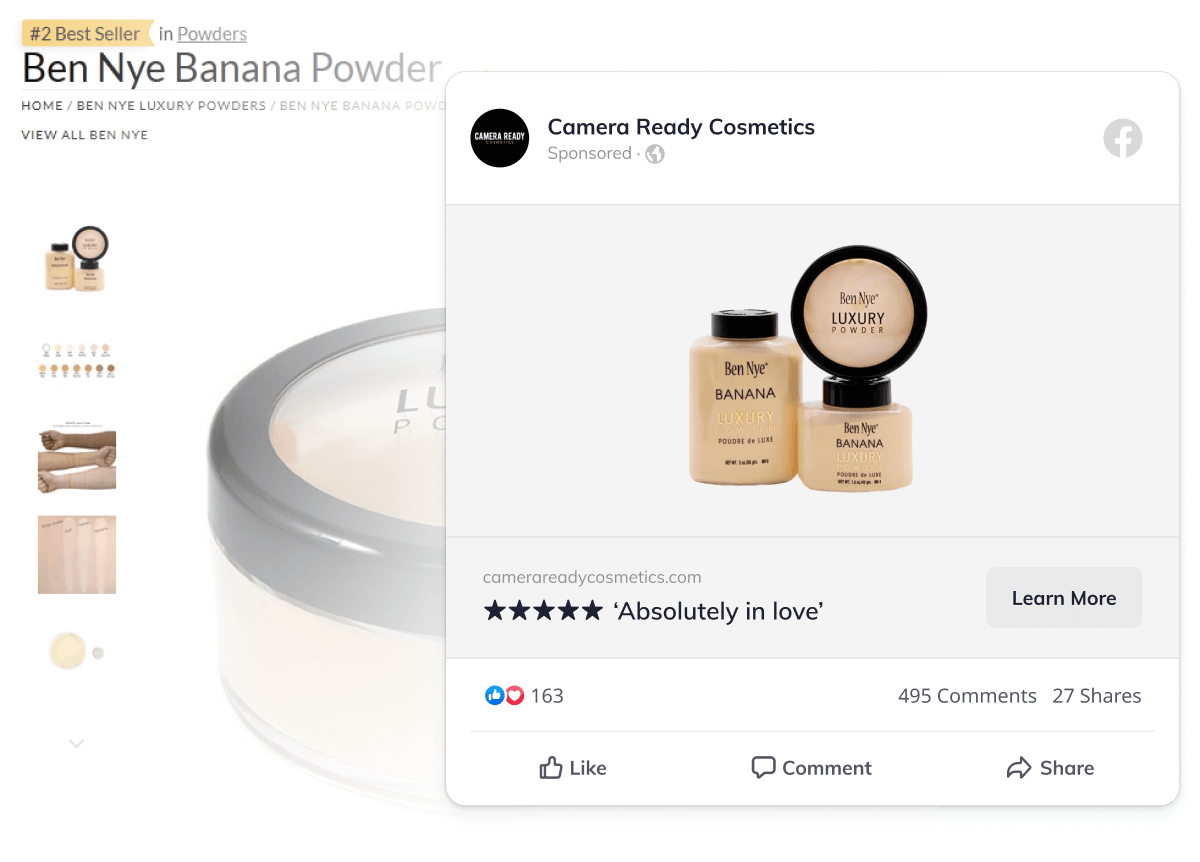
These tactics can fulfill the dual purpose of reminding a customer about a product they previously considered, while at the same time showing them what other happy customers thought about their own purchases to encourage their decision.
Takeaway
- Include reviews in abandoned cart emails – You can add reviews to your abandoned cart emails either by showing the aggregate star rating and review count for product(s) in the email, the most recent and approved 5-star written review, or a GIF that cycles through the 10 most recent and approved 5-star written reviews.
- Share customer testimonials in retargeting campaigns on Facebook and Instagram – Visitors who see remarketing ads are 70% more likely to convert than those who don't. And when displaying social proof alongside the exact product they were once looking at, it can be incredibly persuasive at bringing shoppers back to your website.
Stage Five: Purchase Evaluation
The consumer decision making process doesn’t end once a purchase has been made — your relationship with the customer is still very active and important. In the fifth and final stage, your customer has successfully made their purchase and evaluates their choice.
During this post-purchase window, they’ll be evaluating many elements of their experience, such as:
- Did the product live up to their expectations?
- Do they feel as though they made a good decision in their purchase?
- Was the experience of making a purchase from this particular seller positive or negative?
- Is there anything about the purchase that they regret or would change?
- Does the item purchased solve the problem they hoped it would?
Consumers at this stage have developed strong opinions about your brand, operations, and offering based on their most recent experience with their purchase. And, they’ll be looking for ways to share their experience with other shoppers.
Example
Having found the perfect bike and taken safe delivery of the order, our example customer is headed to the beach on her new wheels.
Using the bike for the first time, she’s focused on its quality, functionality, and suitability to her needs. She’s evaluating her experience with the purchase, reflecting on the previous steps she took until this point.
She could be thinking:
- I love my new bike, but was it worth the time I had to wait to receive it? Would it have been worth ordering one similar from a store with a quicker delivery time?
- The bike was quite expensive. Looking back, I wish they offered some sort of payment options to help me finance it.
- I leave the beach towards later in the day, I wish this bike came with a light so I wouldn’t have to ride it in the dark or buy a light from another store to go with it.
Strategies for The Purchase Evaluation Stage of the Consumer Decision Making Process
At this stage, it’s important that you take the necessary steps to ensure that your customer has had a positive experience. The experience a customer has with your brand can leave a lasting impression. And, it's an impression that can easily be passed on to others.
Bad customer experiences can wreak havoc on your brand and dramatically affect your bottom line. So, go out of your way to make your customers happy — and if they're not, put things right. Research shows that brands with a customer experience mindset drive revenue 4-8% higher than the rest.
It can be tricky to improve your brand’s customer experience, especially if you don’t know where to start or what your customers actually want. This is where customer reviews come into play.
Implement an automated review request email campaign into your post-purchase strategy. This will allow you to create an open dialogue between you and your customers to understand their personal experience with your brand. Here, you can ask the customer a series of personal and product attributes to select or rate, providing you with deeper insights on things such as customer satisfaction, pain points, and product usage.

Using real-life feedback from customers, you can improve how customers view and buy your products, including the products themselves. In addition to using customer reviews and UGC to display onsite in aid of online shoppers purchasing decisions, you can use the valuable insights they provide to accelerate product development. This means you can focus on creating more products and experiences that your customers love.
Reviews also give you exceptional insight into how you should interact with customers in future campaigns. For example, it’s probably not the best idea to invite a customer to your loyalty program after they’ve expressed a negative experience with your brand.
Use the data that your customer reviews provide (such as star rating, customer attributes, and product attributes) to create hyper-personalized campaigns. In fact, 91% of consumers are more likely to shop with a brand that provides curated and personalized experiences. Using reviews, you can ensure you’re following up appropriately with customers based on the previous review rating, sending them product content that fits their personal characteristics, and offering relevant product recommendations based on their previous purchase history.
Takeaway
- Set up an automated review request email campaign – This will help you streamline your review collection process.
- Dive into review analytics and reporting – This will help you track and measure customer feedback at scale to accelerate product development and improve internal processes.
- Use your attribute review data to create personalized email communications with customers – Using the customer and product attribute data you collect from your customer reviews, you can segment your audience based on their personal characteristics to tailor future communications with them using their previous purchase history.
Ready to Own The Consumer Decision Making Process?
As this article has shown, social proof can help at each and every stage of the consumer decision making process. Powerfully persuasive reviews and UGC pack a huge punch when it comes to helping secure sales.
Customers who interact with UGC are 97% more likely to make a purchase than those who don’t, making it crucial at every stage of the consumer decision making process.
Okendo can help. With a suite of tools for collecting and displaying reviews and UGC, we help enable the fastest-growing online brands to build trust, drive conversions and maximize CLTV.
Using our feature-rich platform and powerful integrations with key partners like Google, Facebook, Instagram, and Klaviyo you can rest assured that you’ll be generating high quantities of UGC to display across the consumer decision making process. In fact, our customer Scotch Porter saw a 12% increase in review generation when sending review requests via SMS using our Postscript integration.
Okendo is also fully optimized for mobile, meaning you can deliver the best experience to all potential customers, no matter the device they’re using, or stage of the decision process they find themselves at. This is important considering that mobile commerce sales account for 53.9% of all e-commerce sales.

